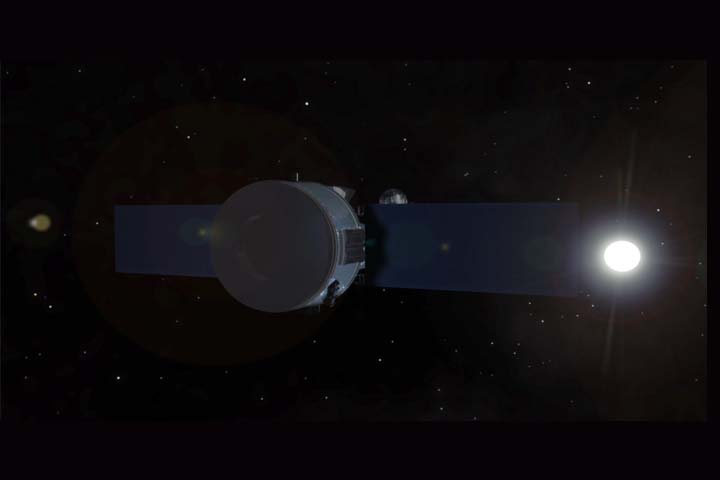A Slice of Light: How IRIS Observes the Sun
Short version of the IRIS visualization with windowed SJI imagery.
The Interface Region Imaging Spectrograph (IRIS) explorer is one of the latest imaging spectrographs developed for NASA missions, this one designed for exploring the energization process in the solar chromosphere at higher resolution than previously possible.
An imaging spectrograph not only takes an image of the region of interest, but also has a small slit in the imager (seen as a dark line about half-way across the image) which passes a thin ribbon of light to a spectroscope. The spectroscope spreads the light out in its component frequencies or spectrum. Monitoring of specfic spectral lines provides additional information on the velocity (and therefore temperature) of plasma in the observed region.
In the visualization presented here, the IRIS slit-jaw imager (SJI) takes images with two different filters, one at 1330 angstroms (gold color table), the other at 1400 angstroms (bronze color table), and these images are displayed overlaying corresponding imagery from the Solar Dynamics Observatory (SDO) 304 angstrom filter (grayscale). The spectra, in this case a closeup view on the 1403 angstrom line from 3-times ionized silicon (designated Si IV), is presented on a semi-transparent plane perpendicular to the images, at the position of the slit in the imager. This allows us to see correlations between features in the images and spectra. For example, some of the bright spots in the image correlate to wider regions along the line suggesting higher temperatures and/or velocities of the plasma emitting the spectral line.
To better examine the region, the instrument also scans the slit over the region of interest, collecting multiple spectra. This allows scientists to compare and correlate structures seen in images with speeds and temperatures of the plasma.
Imaging spectrographs have been flown on other NASA missions, such as the STIS instrument on the Hubble space telescope.
Long version of the IRIS visualization with windowed SJI imagery.

Long version of the IRIS visualization with non-windowed SJI imagery. This version displays the full SJI imagery, and better illustrates the slewing of the instrument.
Credits
Please give credit for this item to:
NASA's Scientific Visualization Studio
-
Visualizer
- Tom Bridgman (Global Science and Technology, Inc.)
-
Scientists
- Bart De Pontieu (Lockheed Martin Solar and Astrophysics Lab)
- Adrian Daw (NASA/GSFC)
-
Producer
- Genna Duberstein (USRA)
-
Writer
- Karen Fox (ADNET Systems, Inc.)
Release date
This page was originally published on Friday, June 26, 2015.
This page was last updated on Sunday, June 23, 2024 at 10:23 PM EDT.
Missions
This page is related to the following missions:Datasets used
-
AIA 304 (304 Filter) [SDO: AIA]
ID: 677This dataset can be found at: http://jsoc.stanford.edu/
See all pages that use this dataset -
Slit-Jaw Imager (SJI) [IRIS: Imager]
ID: 816This dataset can be found at: https://iris.lmsal.com/data.html
See all pages that use this dataset
Note: While we identify the data sets used on this page, we do not store any further details, nor the data sets themselves on our site.

